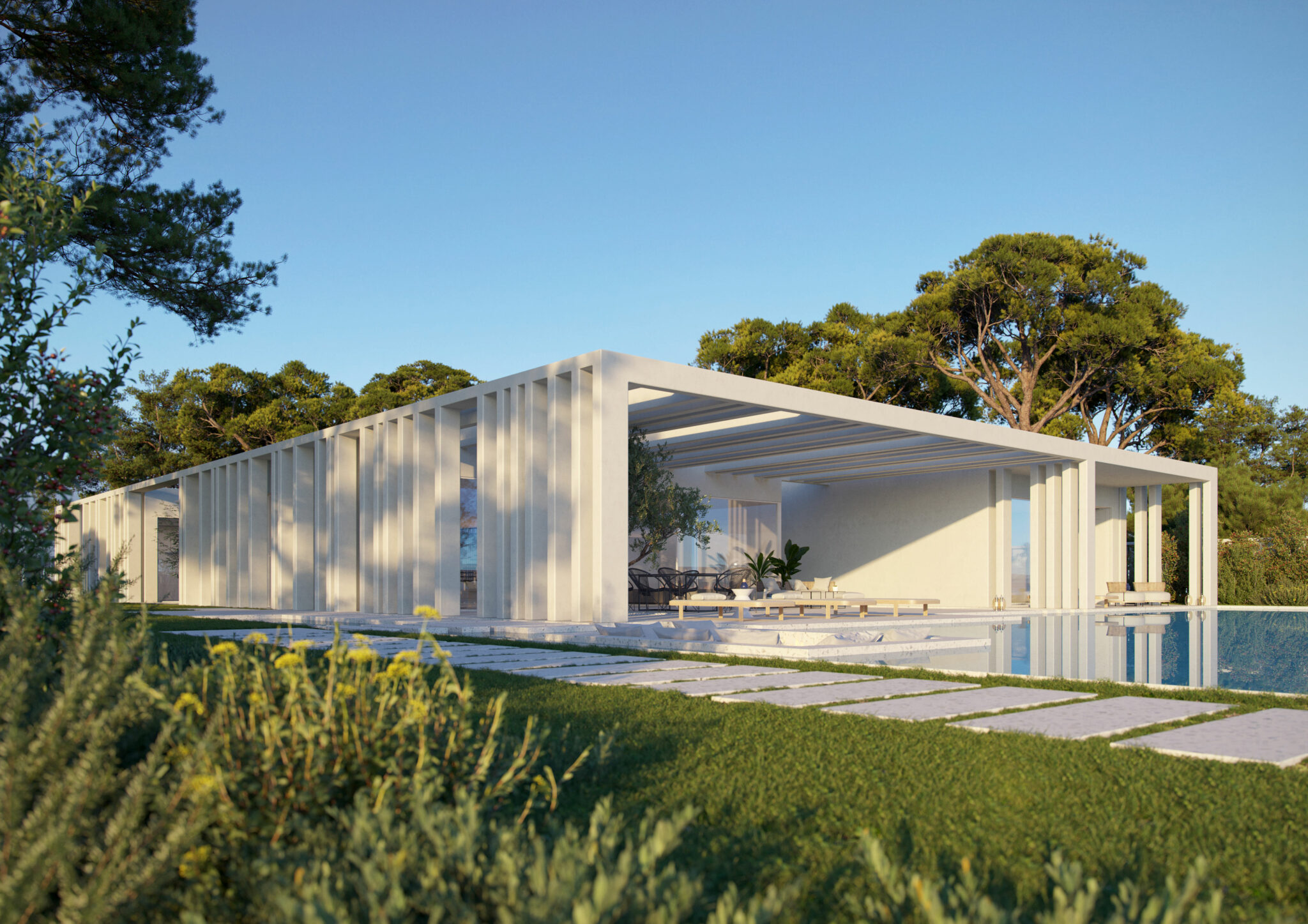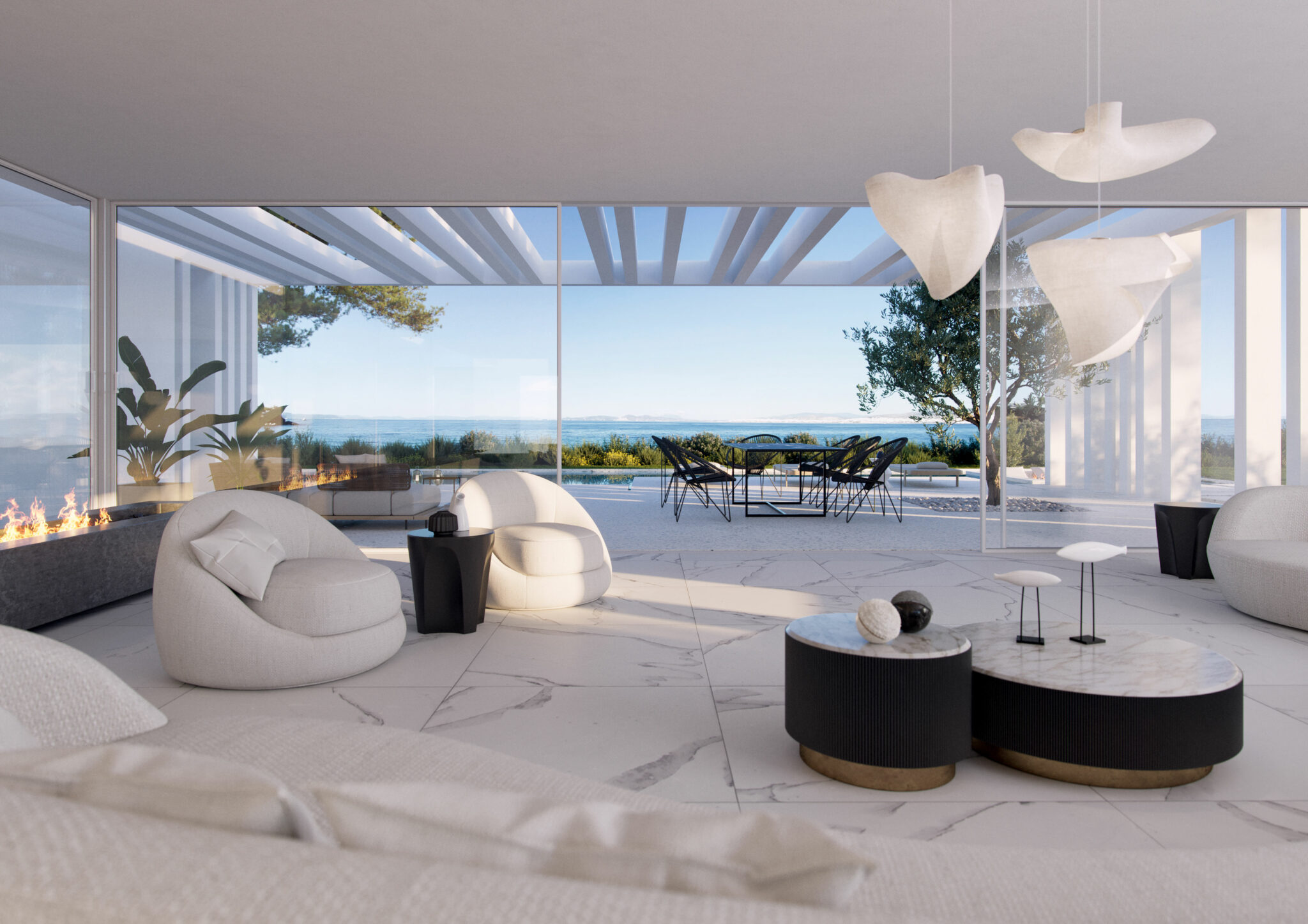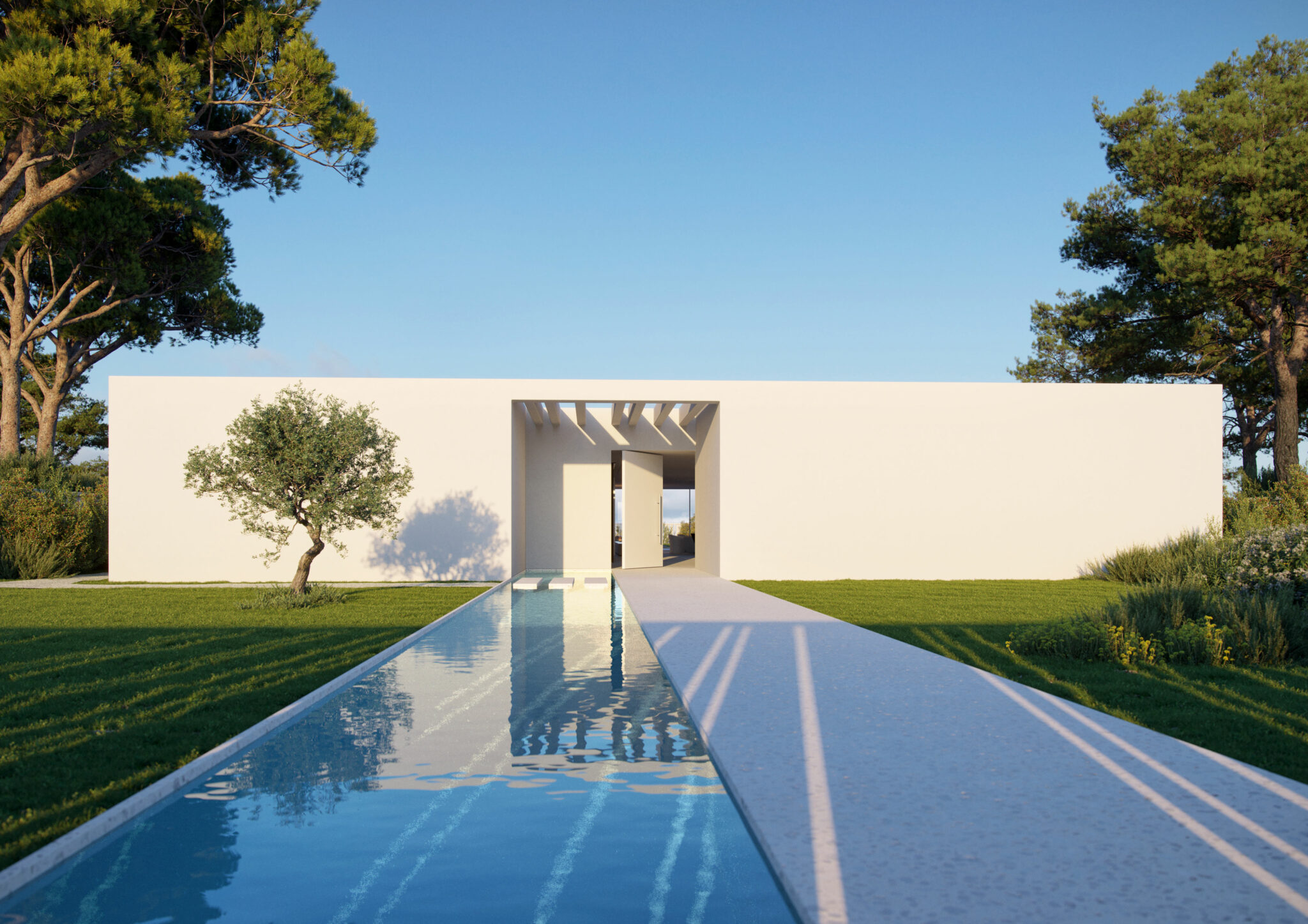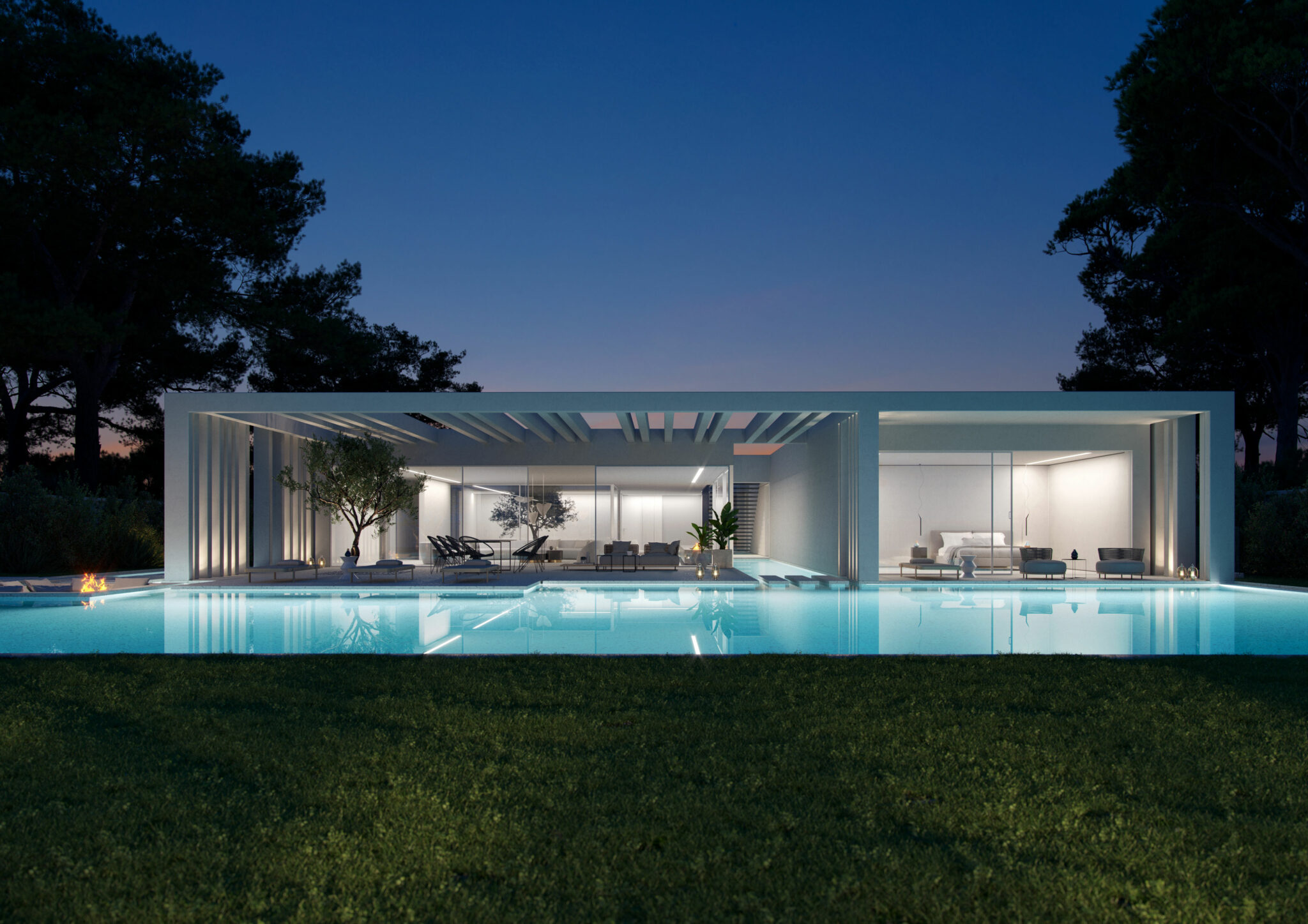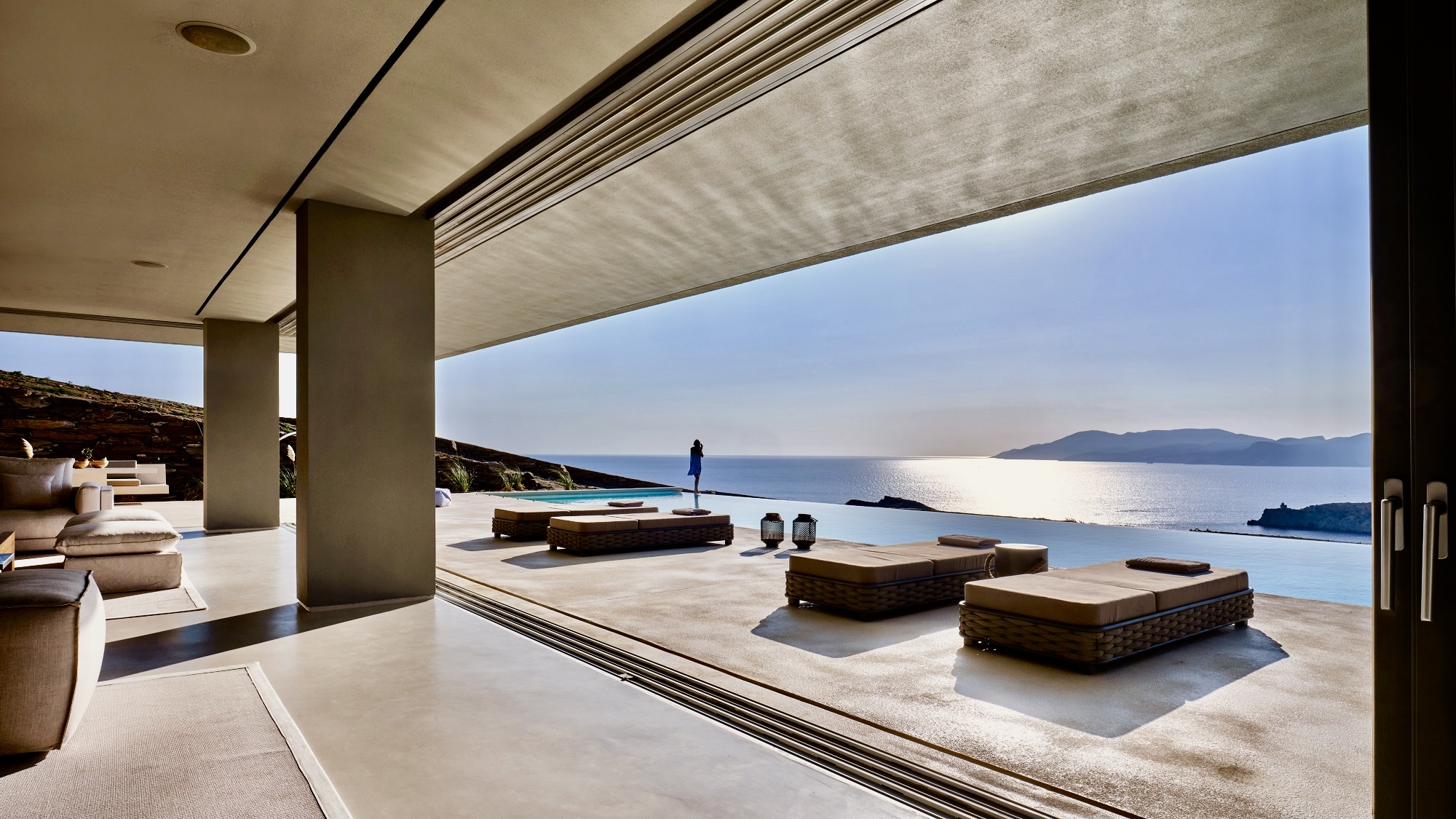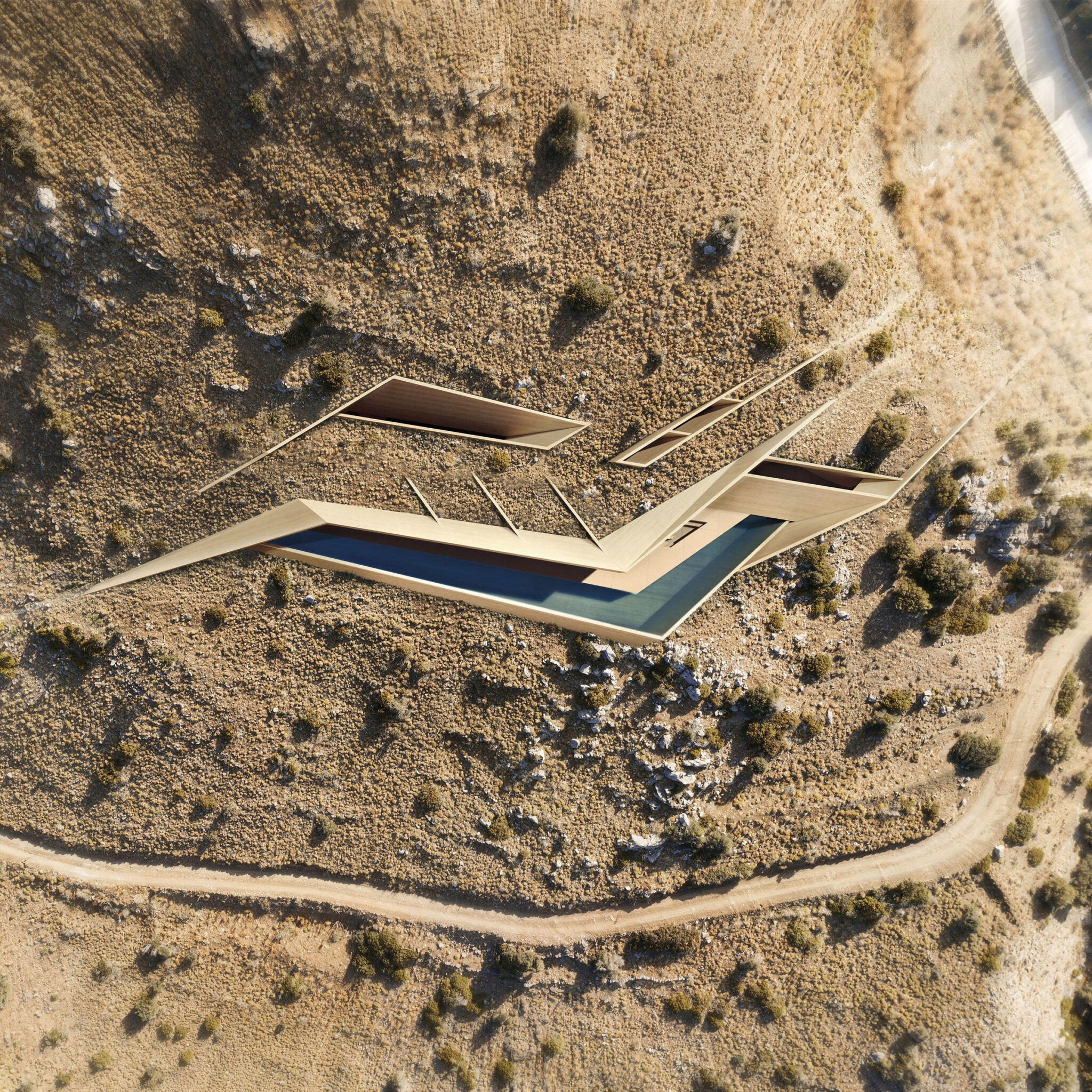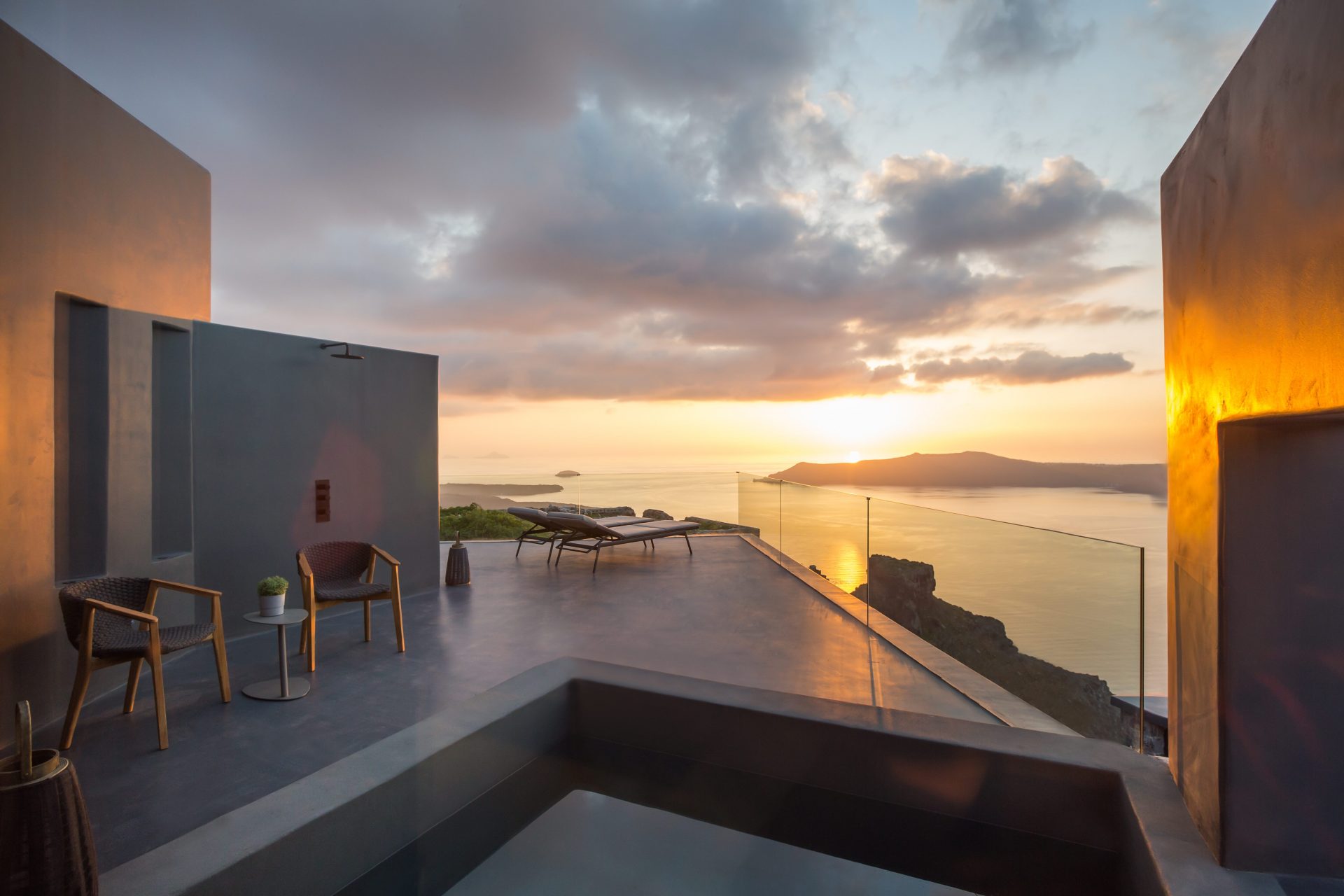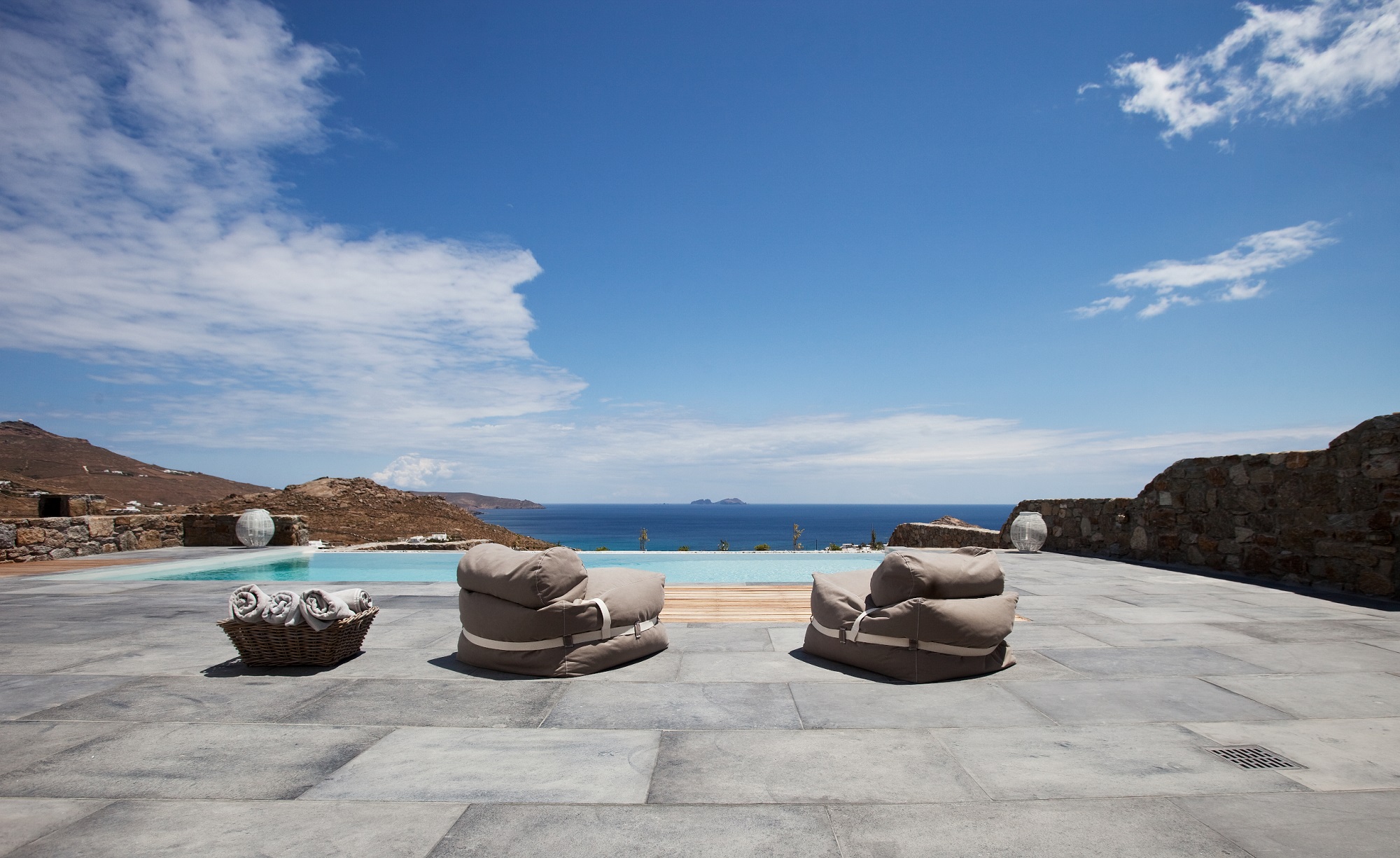Villa “Π” got its name from its shape; there is a deep and semantic reference to Greek history and tradition.
As Dimitris Potiropoulos, the architect in charge of the project, explains: “White is a colour we come across often in Greek tradition, both in the houses on the Cyclades and in the white marble of ancient monuments. The rectangular shape also is the classic geometric outline of a Greek temple. These were elements we used in a modern way. The famous columns, the colonnade of the Greek temple is translated into a sort of barcode here. That is, we have the semblance of an ancient Greek temple, but we didn’t want it done in a too obvious way.”
The philosophy of the architectural firm suits that of philosopher Heidegger, “only in a dwelling at peace with nature can man be-in-the-world and in a safe relationship with it”. In this framework, a balanced relationship between the building and Nature remains the main goal.
“Especially nowadays, with the progress of science leading us to a way of living that is increasingly dominated by products and symbols of technology. In this techno-centric environment, architecture needs to put forward the principles of ecology and culture, and to mediate between natural phenomena, history and man, in order to satisfy man’s essential needs that have almost been forgotten,” Dimitris Potiropoulos explains.
The reasoning of this architectural approach was sustainability. “To avoid the cliché of bioclimatic design” he adds. This means that they chose ecological, that is recyclable, materials that promote sustainability.
This project was completed in 2021. Facing the obstacle of COVID-19, the firm turned to “remote working”; it was the first architectural firm in Greece to “close” and continue working online. “I’d seen where things were going, and I’d spoken with foreign firms that had taken this step, so we had the time to take the software and reinforce the hardware and we each took our computer home. Remote working has obstacles any way: the internet is not reliable and it’s something you can’t control, especially on a conference call with many participants, and you have to repeat yourself for others to understand. And of course, you see designs in a much smaller scale, they are not printed, and can’t be viewed on the big screens we have at the office.”
The “ethics” of the design originates from “habitus”, that is “habits”. It has to do with the way of life, the living atmosphere, it’s not directly about the building/construction, but about the experience it results in. Man’s natural space is, in the end, their experience space, and vice versa. The ‘narrative’ that was invented in the case of Villa “Π” is not just a pictorial representation, but a constant interaction that encourages the user to listen to the land’s – the natural environment, on the one hand, and the memory of Greek history and tradition, in its deepest sense in this case, on the other hand – interaction with the modern way of inhabiting a home.
The interior design is by Potiropoulos + Partners. “What influenced us was the view: what you could see on each side of the plot. The sea and the coastline. These two elements influenced how we placed the rooms in the floor plan. And, accordingly, in the outdoors space we took various activities into account: sunbeds, living spaces etc.” This way, the villa’s location is made use of to the maximum.



